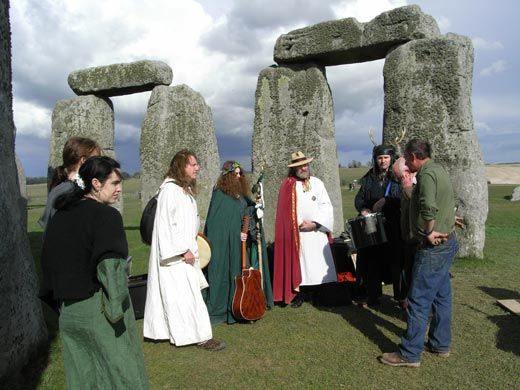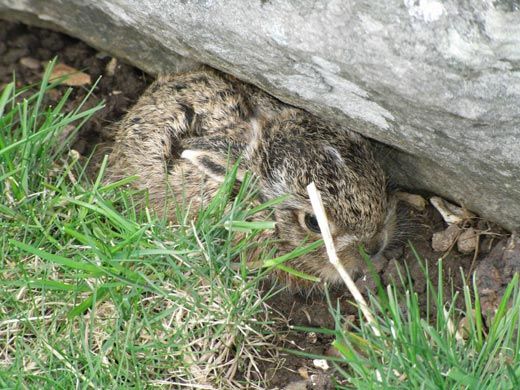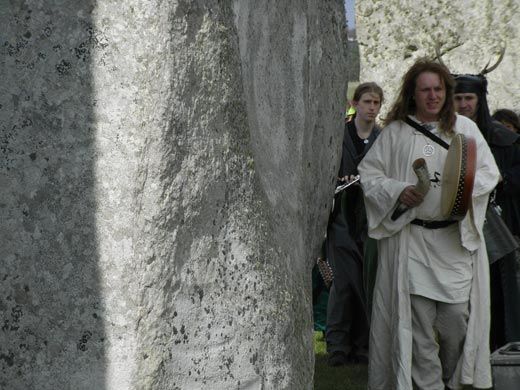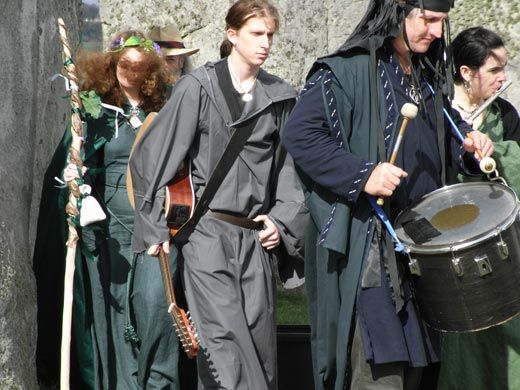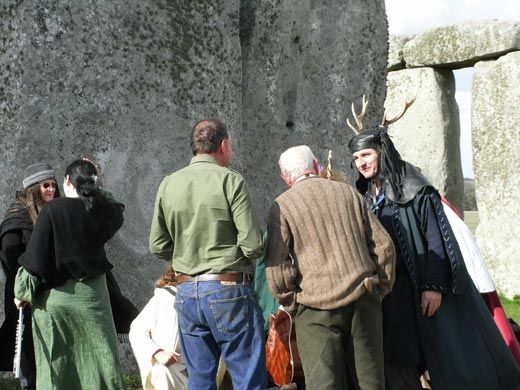Dispatch from Stonehenge, Day 14
April 13: The Druids Bless Our Departure
/https://tf-cmsv2-smithsonianmag-media.s3.amazonaws.com/filer/dis5-stonehenge-631.jpg)
After two weeks of digging within the inner circle of Stonehenge, the archaeological team must now undertake the final, and perhaps most mundane, part of the excavation: filling in the 8-foot by 11-foot open trench, which is about 3 feet deep.
The atmosphere is cheerful, yet focused. The pit must be closed today, and the grass laid back over the top. So everyone pitches in—archaeologists, students and even journalists such as myself—to help shovel excavated soil back into the hole. As we work, a kestrel hovers above the imposing stone trilithons, while a small hare hides trembling beneath a fallen and now partially submerged sarsen stone. Before too long, the muscles in my lower back are letting me know that I shouldn't stay bent over like this indefinitely (a feeling that becomes more pronounced on the train journey home).
Earlier on, before the backfilling began, the archaeological team threw a few mementos into the pit: a medal from the London Society of Antiquaries (founded in 1707), a two-pence piece (the most recently minted coin anyone had, dating from 2007), and archaeologist Tim Darvill's broken trowel.
By afternoon, most of the labor had been completed. It was odd to look down now at a flat, featureless soil surface, knowing what lies below—and to consider that this might be the only time I'll ever be able to peer firsthand beneath the ground and catch a fleeting glimpse of the 5,000-year history of Stonehenge.
Beyond the practical task of returning the ground to something approaching its original condition, the refilling of the pit was also imbued with deep symbolic significance. A group of eight Druids arrived on site during the final stages, just as they had before the excavation began, to offer their blessings. "At the beginning we warned the spirits of the land that this would be happening and not to feel invaded," explained Frank, a gently spoken Druid dressed in a long white robe. "Now we're offering a big thank you to the ancestors who we asked to give up knowledge to our generation, and acknowledging the magic of Stonehenge."
The theory that Stonehenge was a place of healing resonates strongly with the Druids, who believe that it has powers to bring good fortune to those who visit the site. And so, with just a few inches more of soil to be added, the Druids threw seven grains of wheat into the pit, one to represent each continent, and they offered a prayer to provide food for those in need of nourishment around the world.
The ceremony, blessed with a wonderful burst of afternoon sunshine, ended with a song the Druids composed especially for this historic occasion. Guitar, drum, flute and singing combined in a hauntingly melodic paean to these hallowed grounds.
After two solid weeks of activity, the researchers are delighted. "It's a fantastic trench," says Darvill. "Every phase of construction at Stonehenge is represented here."
While the onsite activity at Stonehenge has come to an end, the project will continue less visibly back at the various university departments and laboratories that will analyze the products of all this toil (two tons of excavated material has been collected). "There's a lot more to be done—what we've got is a lot of material to work on," remarks Darvill, who is now taking a short holiday in Athens before a major academic conference this weekend. Fellow archaeologist Geoff Wainwright will be returning to his home in Pembrokeshire, Wales, where he looks forward to being able to have his customary two cups of tea in the morning.
For both scholars, the coming days and weeks will provide an opportunity for the personal meaning of the past fourteen days to sink in. As Darvill says, "Whenever you do an excavation it's a very hectic time, and so you don't get a chance to stand back and reflect—that happens afterwards."
With eyes pressed to the ground, focusing on what's happening at your feet, it's easy to forget about the astonishing monument that you're standing within. You need to pause from time to time, take a deep breath and look around to remind yourself of the majesty of Stonehenge. The songs and speeches of the Druid ceremony provided believer and non-believer alike a few peaceful, reflective minutes to do just that.
Over the last two weeks, I've developed not only an affinity with this prehistoric site, but a deeper appreciation of the awe and reverence with which people throughout history have viewed this landscape and its iconic stones. Leaving for the last time was an affecting moment. No more shall I stand in the shadow of a looming trilithon, or beside a worn-down bluestone or over a broken sarsen stone. This phase of the project, alas, is now over. Goodbye, Stonehenge.
Dan Jones is a freelance science writer who has contributed articles to New Scientist.
